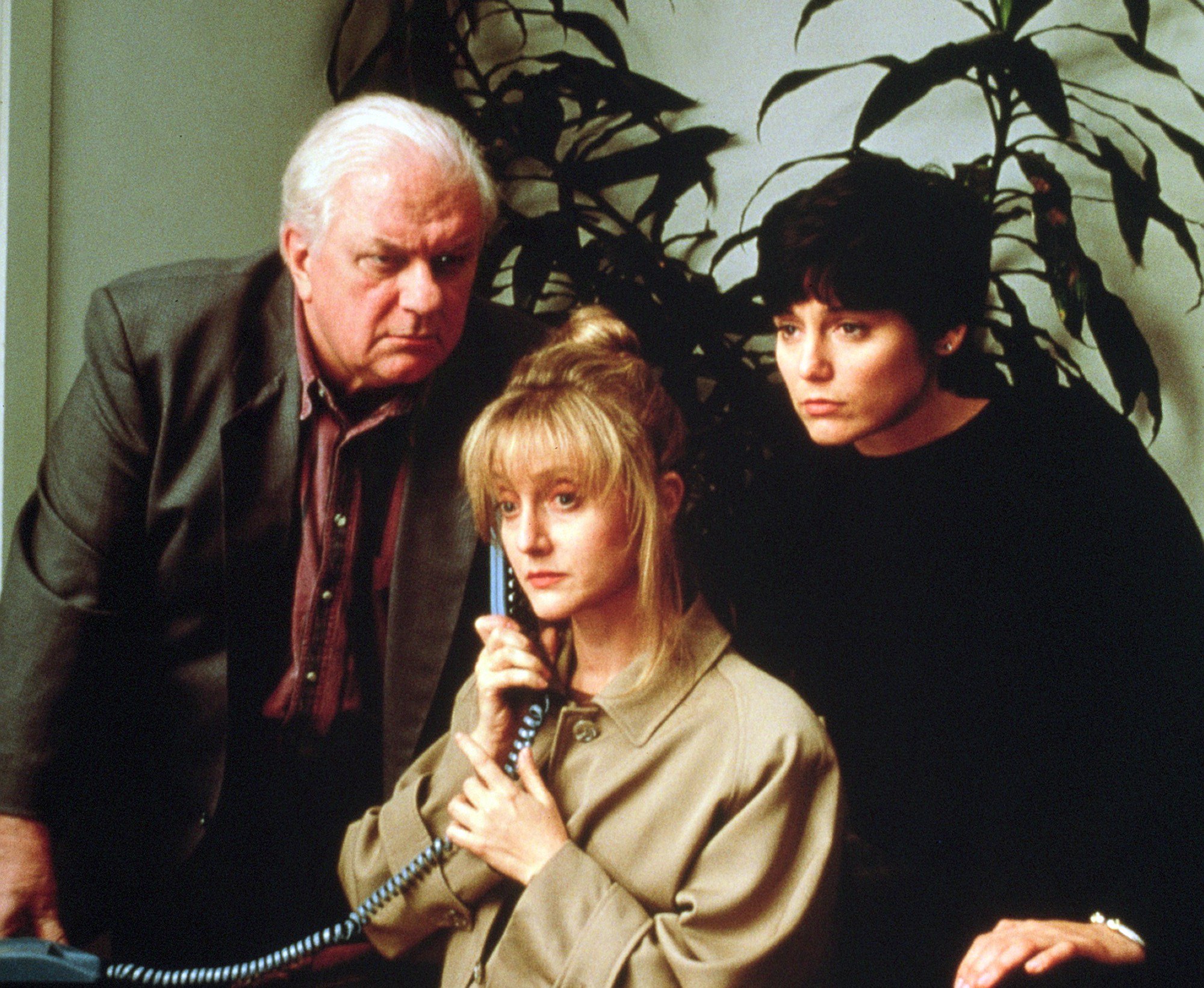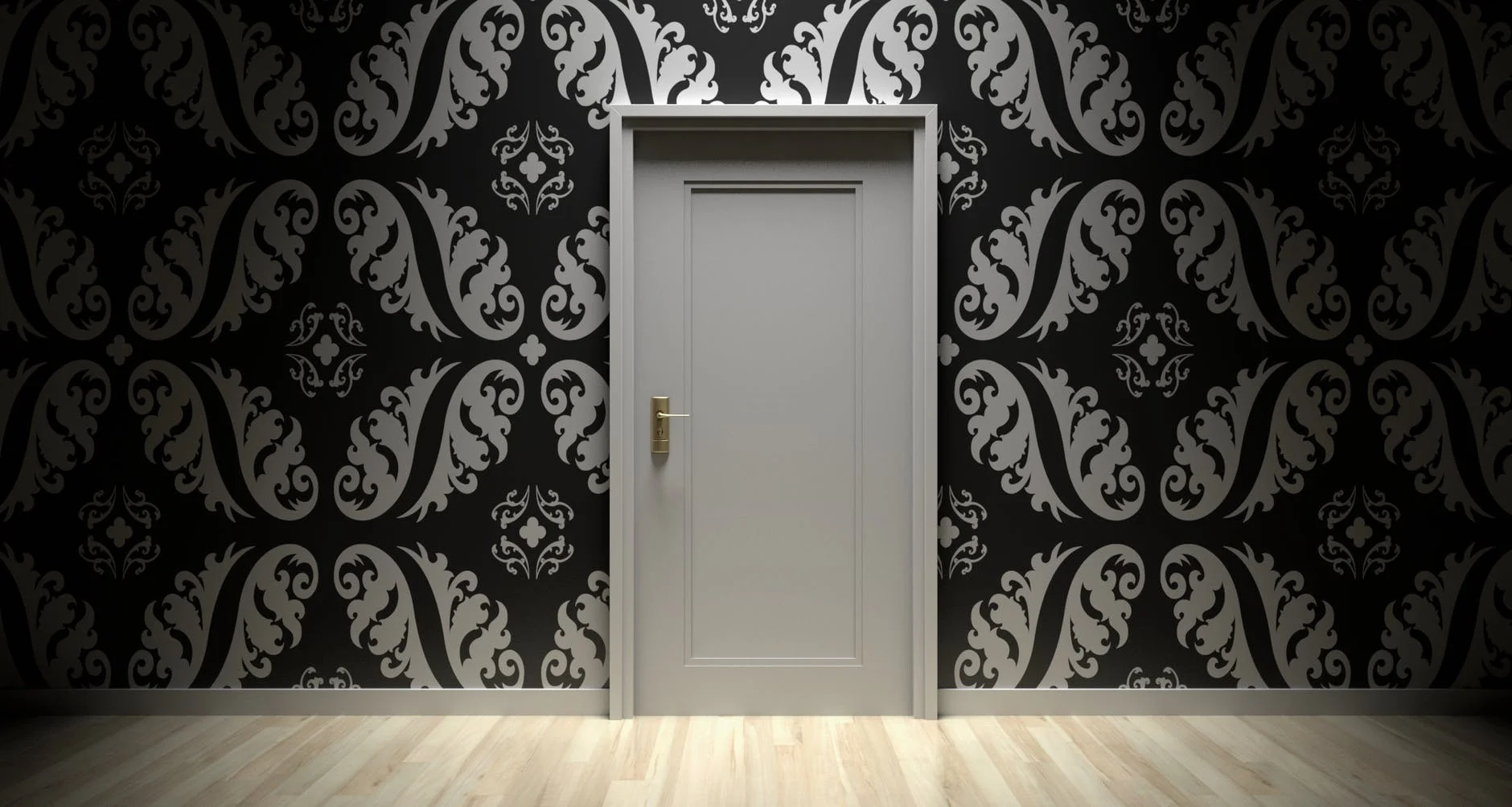[Pride 2019] How Horror is My Coping Mechanism
Growing up in a suburb south of Houston, Texas, there wasn’t much to do at the time other than go out to eat and watch movies. So unless you wanted to chow down at the same local joint you went to every other day with your family, you frequented the four-plex theater, or you picked up a few rentals at Fred’s Video. I was left to my own devices most of the time because my parents had a new business to run and my half-brothers didn’t like baby-sitting. My siblings’ aversion to care-giving was a mixed blessing for me – they let me rent whatever I wanted at the video store so long as I didn’t bother them when we got home.
On a seminal day of my childhood, I left the meager kids’ section and ventured towards the back of the store labeled “HORROR.” This was an area I never visited because I was always too scared. Yet that day, I felt more brave than usual. Sitting disregarded on the shelves were titles I’d never heard of – Alligator, The Fog, Graveyard Shift, Waxwork. My eyes darted back and forth from one slipcase to another, trying to infuse my brain with every attention-grabbing box art now at my fingertips. My father always talked about going to drive-ins with my mother to watch scary movies, and he even tried to show me some of them when I was pint-sized. But until that very moment, I never realized exactly how elated horror could make me feel.
My deep dive into horror from that point onward was a result of my desire for escape. I spent a great deal of my early childhood holed up in my room trying to exorcise upsetting thoughts. My parents constantly argued in front of me – usually about me – and my half-brothers tormented me for reasons beyond my control. At school, I was singled out because I didn’t look or act like the other kids. My nickname of “Bruce Lee” was bestowed upon me by my peers because he’s the only Asian celebrity they could think of back then. In any given week, I felt burdened by toxic notions that rested soundly on my prepubescent shoulders. Thankfully, Fred’s Video restored my verve each and every time I ventured down the horror aisle.
My rule of thumb as a kid when it came to horror – if the video art looked like something my mother would disapprove of, I would rent it. And one particular movie I knew she would detest was the 1983 slasher Sleepaway Camp. It seems weird to say a movie like this was decisive in helping me realize just how “different” I was from other kids, but seeing a young Angela Baker and her brother catching a peek of their fathers’ entangled, unadorned bodies was a kind of man-on-man intimacy I’d never witnessed before. Not only did the movie show me two queer daddies embracing one another without any sort of sexual ambiguity, it also confirmed something I had felt about myself for as long as I could remember.
As a teenager, I fought growing pains by watching the goriest horror movies I could get my hands on. And I favored teen slashers for the same reason I liked teen comedies – I was keen on attractive young men who were often on the cusp of their dangerous sexualities. I was in denial of my own identity, and somehow horror was helping me to channel it without ever having to say anything out loud. After all, my hometown is God-fearing, Bible-thumping, and wary of anyone who stood out from the pack. Not to mention my parents’ livelihood was dependent on the generous white folks who made sure to tell them how good their English was.
I felt relief from the pangs of suburban life and narrow mindsets when I left for college. The transition was more overwhelming than I expected it to be, though. My academic struggles drove me to depression, and unlike before where I was the odd man out, I was now lost in a sea of other people who looked like me. These unspoken frustrations of mine developed into a need for horror films with palatable themes – Ginger Snaps mirrored my perceived outlier status; When a Stranger Calls Back introduced a final girl whose reaction to trauma was similar to mine; Night Warning gave physical form to the homophobia I dreaded; and A Tale of Two Sisters reminded me of how seemingly irreparable my own family’s dysfunction is.
The last decade has been – to put it lightly – challenging. I was coming into my own after graduating from college, and I had found a close-knit group of friends who were as accepting of me as I was of them. I managed to stir up some confidence, too, in my imprecise abilities as a creative type. All of this came to what felt like a screeching halt when my mother fell ill and needed someone to care for her and the family business. Unable to shirk that instilled East Asian mindset that children must care for their elders above all else, I surrendered my personal life. I gave up what was essentially my freedom.
I quit my job, I sold my belongings to cover medical bills, and I’ve been working steadily to pay off a large debt that’s not even mine to begin with. Being back in my conservative hometown and around my disapproving mother has aggravated the dejection I bear every day. I also lost contact with my friends in Austin, and to this day, I really regret letting my shame have so much power over me. Although it was in this mounting loneliness that I returned to horror – the one outlet that’s always been there for me. More than ever, I relate to the desire for survival. Finding other fans online as well as writing about horror films has truly been the best therapy I could ever ask for.
To anyone on the outside of horror, it appears strange to find comfort in films that resonate with my deepest fears and the discouraging aspects of my life. But that’s what I love about horror – it frames its messages so that they can be interpreted however needed. Horror is what soothes my soul right now, and best of all, it keeps me alive.
Paul Le is a freelance writer and occasional artist who loves horror, kaiju, Sailor Moon, animation, and cryptids.
You should follow him on Twitter.


![[Pride 2019] How Horror is My Coping Mechanism](https://images.squarespace-cdn.com/content/v1/5b39608d75f9eef54c62c3f0/1560629268953-K08L1OLGI2ICS3WAI62V/F1pmQFht.jpg+large.jpg)


![[Pride 2021] An Ode to the Bodies that Lifted Me Up: 'Queer' Muscularity in Pop Culture](https://images.squarespace-cdn.com/content/v1/5b39608d75f9eef54c62c3f0/1622928217981-TPF2YFDN8FHIZ34L9Y57/clean.jpg)
![[Pride 2019] Tethered to the Closet](https://images.squarespace-cdn.com/content/v1/5b39608d75f9eef54c62c3f0/1560985069673-1LGBOSFI1WH4KFFN4NFV/mv5bztlinwjhm2ytndc1mc00ytk1lwe2mgytzme4m2y5oddlnzqzxkeyxkfqcgdeqxvymzy0mte3nzu40._v1_.jpg)
![[Pride 2019] Blood, Boys and Blowjobs: Revisiting 2004's Gay Slasher, Hellbent](https://images.squarespace-cdn.com/content/v1/5b39608d75f9eef54c62c3f0/1561677413349-Z8GQF3LFPP2MCPCWDIUP/tyertyretyer.jpg)
![[Pride 2019 Short Story] The Lighthouse](https://images.squarespace-cdn.com/content/v1/5b39608d75f9eef54c62c3f0/1560976351288-0HHZ6O2JR0HUSSCFQX1Q/pexels-photo-722664.jpeg)
![[Pride 2019] Horror, Fear & Identity](https://images.squarespace-cdn.com/content/v1/5b39608d75f9eef54c62c3f0/1560974283767-URCVH49ICXSUYBFM41EC/1253258.jpg)
![[Pride 2019] THE BOYS NEXT DOOR: The Homoeroticism of Fright Night and how it saved my life](https://images.squarespace-cdn.com/content/v1/5b39608d75f9eef54c62c3f0/1560968195855-AJ11PZT1NPP0A15IW2MF/fright-night-gay.png)
![[Pride 2019] The Lesbian Villain](https://images.squarespace-cdn.com/content/v1/5b39608d75f9eef54c62c3f0/1560979479014-K1CGGIB1HGL6M5XQQ8JH/asdffsdfgsdghdfghhjj.jpg)
![[Pride 2019] The Final Girl: A LGBTQ+ Representation](https://images.squarespace-cdn.com/content/v1/5b39608d75f9eef54c62c3f0/1560978597649-KMGZYFA5I02ZOMT9Q3VF/8ea179785b1649cdeefb0eb077c1bd32.jpg)
![[Pride 2019] Normalizing Queerness through Vampirism](https://images.squarespace-cdn.com/content/v1/5b39608d75f9eef54c62c3f0/1560977810654-H9UDEGT2J1L0RUV6KIJX/werwertwertwertw.jpg)
![[Pride 2019] Injecting Queer Femme Rage into "Audition"](https://images.squarespace-cdn.com/content/v1/5b39608d75f9eef54c62c3f0/1560979929151-RVBW26DNCHR5TBXC21BK/audition-1108x0-c-default.jpg)
![[Pride 2019 Short Story] Deer Wife](https://images.squarespace-cdn.com/content/v1/5b39608d75f9eef54c62c3f0/1560975199628-JF11Z4SHT75XB1A4L7DU/pexels-photo-2302802.jpeg)
![[Pride 2019] I Don't Watch Horror Movies](https://images.squarespace-cdn.com/content/v1/5b39608d75f9eef54c62c3f0/1560630982974-O3ZCRGEFNR2JOEF6N011/tKEHoKPZv3af0Pn3poaOLHOJ6NM-0.jpg)
![[Pride 2019 Short Story] Such Nice Guys](https://images.squarespace-cdn.com/content/v1/5b39608d75f9eef54c62c3f0/1560973260982-RMED56MMBWXYO52VD9Y5/pexels-photo-408517.jpeg)
![[Pride 2019] “Reclamations of Ourselves”: Ritual, Horror, and the Erotic in the work of Audre’s Revenge and Monika Estrella Negra](https://images.squarespace-cdn.com/content/v1/5b39608d75f9eef54c62c3f0/1560972375295-YKD2V1JBSYZLSXRT17IJ/dsfghsdghdsg.jpg)
![[Pride 2019] Is Jennifer’s Body the Bisexual Horror Film We Never Knew We Needed?](https://images.squarespace-cdn.com/content/v1/5b39608d75f9eef54c62c3f0/1560967347423-2I74925P8ETSI0BT7I81/jennifers-body-poster.jpg)
![[Pride 2019] Why Horror?](https://images.squarespace-cdn.com/content/v1/5b39608d75f9eef54c62c3f0/1560632665620-2J7FFX40WJU2LDRTZAJR/LATENTIMAGE6.png)
![[Pride 2019] Villainizing Queerness in Alexandre Aja’s High Tension](https://images.squarespace-cdn.com/content/v1/5b39608d75f9eef54c62c3f0/1560631689481-PWYN80K2HYST4CYIO5V6/MARIE_%2528HAUTE_TENSION%2529.jpg)
![[Pride 2019] Horror Did Not Save My Life](https://images.squarespace-cdn.com/content/v1/5b39608d75f9eef54c62c3f0/1560631362747-54XOE0TBGJXGOB8UOX8P/KE64oaAn.jpg+large.jpg)
![[Pride 2019] 18 & Gay](https://images.squarespace-cdn.com/content/v1/5b39608d75f9eef54c62c3f0/1560634045789-OSQ1W5ZSKQSGKPVAJXYW/XR11F0fT.jpg+large.jpg)

![[Pride 2019] Do You Sleep?](https://images.squarespace-cdn.com/content/v1/5b39608d75f9eef54c62c3f0/1558986875527-Q37PJSRVFPBZHMOFJBRW/i-like-when-measdfasdfasdfn-are-direct.jpeg)
![[Pride 2019] Embracing My Nature: Hannibal and My Gay Awakening](https://images.squarespace-cdn.com/content/v1/5b39608d75f9eef54c62c3f0/1560382782983-NN9RA658WTZFPQEK4DMR/f175ffff4188695dfbde6276a3c13244.jpg)
![[Pride 2019] How Sailor Moon Taught Me It's OK to be Queer](https://images.squarespace-cdn.com/content/v1/5b39608d75f9eef54c62c3f0/1560298136905-6NXB1NB337UZRR84MVCL/1.PNG)
![[Pride 2019] Don Mancini's Queer Inclusion](https://images.squarespace-cdn.com/content/v1/5b39608d75f9eef54c62c3f0/1558992991942-1EFIALF6MR98YNGQJ61J/Glenorglenda-e1497479115890.jpg)
![[Pride 2019] “Where’s the dick in my horror?!”: Thoughts on Queer Spectatorship and Desire in Horror](https://images.squarespace-cdn.com/content/v1/5b39608d75f9eef54c62c3f0/1558935308247-WRJM5QWQOIPH3IBE5ENJ/Hellbent-Pic-1.jpg)
![[Pride 2019] Two Angels: The Mutant Body in X-Men: The Last Stand and X-Men: Days of Future Past](https://images.squarespace-cdn.com/content/v1/5b39608d75f9eef54c62c3f0/1560028480927-8VUZWP0O88SMK2TQTC3H/thumbnailImage.jpg)
![[Pride 2019 Short Story] A Bright and Bloody Becoming](https://images.squarespace-cdn.com/content/v1/5b39608d75f9eef54c62c3f0/1559090164312-FSVRI54ZX9ZUE7R9JC7Z/image1.jpeg)
![[Pride 2019] Fright Night and The Sexual Awakening of a Queer Woman](https://images.squarespace-cdn.com/content/v1/5b39608d75f9eef54c62c3f0/1559089258501-QQA99TSCU2BZVZFZUXLM/Jerry_Original.jpg)
![[Pride 2019] I'm Gay for Horror](https://images.squarespace-cdn.com/content/v1/5b39608d75f9eef54c62c3f0/1558991573629-UHWUVOMEKTH56IJ11XAS/the-changeling-1980-film-05ae6968-0ee6-4bb0-aa87-5e652d659be-resize-750.jpg)
![[Cinepocalypse 2019 World Premiere Review] Attack of the Demons blew me away](https://images.squarespace-cdn.com/content/v1/5b39608d75f9eef54c62c3f0/1559517754151-Y339R0C4DJ4NESQ5QI0X/DemonsTeaserPoster.jpg)
![[Cinepocalypse 2019] Achoura/Achoura La Nuit des Enfants](https://images.squarespace-cdn.com/content/v1/5b39608d75f9eef54c62c3f0/1560027249877-I780HXZBTPWE7H161PZT/QqawTU7k.jpeg)